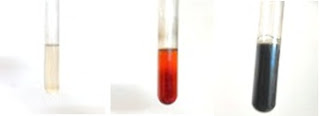Kerala, the God's own Country is now turning out to be the green corridors for the synthesis of nano-materials. The new adjective is befitting for the Place, since the State in Indian union is a treasury of Ayurvedic medicinal plants found in almost all villages. In fact, in the current scenario, there has been a massive apprehension over nanotechnology, particularly in their synthesis which is said to be leading towards environmental pollution; the process is largely leaning towards the green route wherein hazardous reagents are being replaced by ecofriendly entities such as plant materials. Since the green model has become recognized after the reports of Dr. Varma et al., who revealed possibilities for plant polyphenols or similar antioxidants being an efficient substitute for hazardous reductants such as sodium borohydride in the synthesis of metallic/oxide nanoparticles, exploring various flora diversity turned out to be dutiful and historical inevitability of researchers in the field, to revolutionize the tempo. Since Kerala is the real corridor for a variety of flora, it is high time to explore the countryside knowledge about the flora diversity to obtain the reductants to synthesis high quality nanocrystals for applications in various technological, industrial, biomedical and diagnostic areas ultimately for the benefit of the construct of a healthier society.
 |
| Fig. From left, the precursor salt, plant extract and the formation of nanoparticles after the reaction between the rest of the two | | |
In this context, our group of researchers, including three of our MSc students are engaged in exploring the local flora at South Kerala, particularly at Kollam, Punalur, Aranmula etc., to obtain the suitable reductants to synthesis nanocrystals of top quality. One such attempt is shown in the above figure. Here the plant variety locally called kilimaram (Scientific identification of the species is under discussion) has been used. The iron based precursor salt after reduction is supposed to be yielding iron based nanoparticles. The detailed crystallographic analysis of the sample nanoparticles obtained is in pipeline. Your comments about this work are valuable and constructive for us and those who have the real spirit of interest can join hand in future.

Comments
Dear Professor, Thank you for your valuable comment. As could been seen from our last attempt using a local plant variety at South Kerala, the concentration of extract, the reductant to precursor ratio, temperature, aging time etc., have great role to play a control over size of nanoparticles so synthesized. It is interesting to note down that our TGA results on last attempt reveled that there exists an organic coating over nanoparticles to avoid agglomeration. The plant extract at the same time acting as reductant and stabilizer makes the size controllable and enhances the dispersion. Your suggestions give a solid direction to our research in the sense to try a variety of extracts.
regards
Interesting project. One of the main issue of synthesis of NPs using plant extract is no control over particle size and their dispersion, which is key for their use/application. If you can achieve this by using some specific plant extract, it will be really great, otherwise I do not see any advantage of these so called green synthesis of NPs.
Link to the blog of the author: http://drasp.blogspot.in